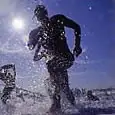
The fifth World Class Workout comes via Ian Murray, head coach of the Los Angeles Tri Club.
An accomplished triathlete in his own right as well as the entrepreneur behind individualized online multi-sport coaching site ACMEcoaching.com, Ian has earned his status as a triathlon sports authority.
While previous World Class Workout columns have focused solely on swimming, it is a pleasure to welcome Ian as a guest who can provide a great example of a cross-training brick workout.
Bricks are drills that focus on more than one sport at a time, designed to accustom an athlete to the transitions required in a triathlon. Ian's workout may have its roots in triathlon training, but it also is invaluable to the open water swimmer (who more often than not is required to transition, or run, up the beach to the finish line).
The swim-to-run transition is often overlooked by triathletes, who discount the importance of the run between the swim and bike portions of their event.
As Ian explains: "Race directors can't always situate the swim exit beside the bike start. The result is often a run between the edge of the water to the transition area."
He cites famous races such as the Escape from Alcatraz event in San Francisco, the Nautica Malibu triathlon, and Mrs. T's Chicago race, all of which require lengthy runs between the swim finish and the bike start.
Because it's such a minor portion of the overall race, the transitory run is often neglected by triathletes. However, it is a crucial transition because it is the only opportunity to loosen up, recover, and adequately prepare your legs and body for the long bike ride ahead.
It is also a time to gain valuable seconds on competitors who may not be as graceful and fast on their feet upon exiting the water.
"When most athletes exit the water," Ian says, "they find their legs slow to respond to the running motion, and their arms, chest, and shoulders are stiff and heavy. The demands of the swim result in the upper-body muscles being swollen with blood and congested with lactic acid. Time is needed for that lactic acid to flush, and for the blood to make its way down to the leg muscles.
"This time can be shortened, and a smoother, less disorienting feeling can be achieved in the transition, with proper training."
Ian has designed the following swim/run combo workout to increase the body's awareness and efficiency during the tough swim-to-run adjustment.
Warm-up Jog/Run:
1 - 1.5 miles
Pace should range from very slow to slow (this is, after all, a warmup). Focus at the end of the run: a diagnostic check of how it feels to run in comfort and what you body is doing from head to toe.
Warm-up Swim:
3x150
Mix some backstroke in with your crawl. Pace is easy with a full minute of rest and stretching between each 150. Focus on your body's balance (head, hips, heels all level near surface)
- 1
- of
- 2
Get ACTIVE on the Go


Meet Mobile
Swim smarter: heats, lane assignments and real-time results in the palm of your hand.
Available for iOS | Android
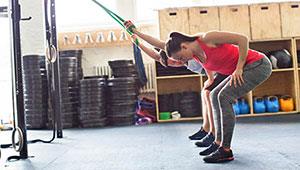

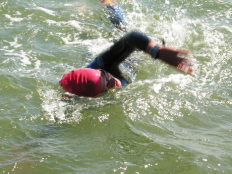
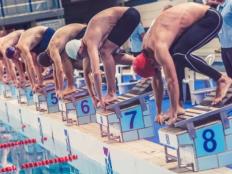
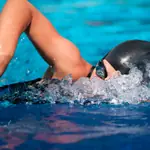


Discuss This Article